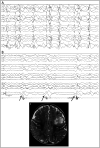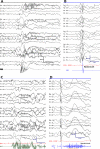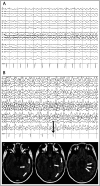The 2010 revised classification of seizures and epilepsy
- PMID: 23739099
- PMCID: PMC10564058
- DOI: 10.1212/01.CON.0000431377.44312.9e
The 2010 revised classification of seizures and epilepsy
Abstract
Purpose of review: Classifications of epilepsies (1989) and seizures (1981) took a central role in epilepsy care and research. Based on nearly century-old concepts, they were abandoned in 2010, and recommendations for new concepts and terminology were made in accordance with a vision of what a future classification would entail. This review outlines the major changes, the ways these changes relate to the earlier systems, the implications for the practicing health care provider, and some of the recommendations for future classification systems.
Recent findings: New terminology for underlying causes (genetic, structural-metabolic, and unknown) was introduced to replace the old (idiopathic, symptomatic, and cryptogenic) in 2010. The use of generalized and focal to refer to the underlying epilepsy was largely abandoned, but the terms were retained in reference to mode of seizure initiation and presentation. The terms "complex" and "simple partial" for focal seizures were abandoned in favor of more descriptive terms. Electroclinical syndromes were highlighted as specific epilepsy diagnoses and distinguished from nonsyndromic-nonspecific diagnoses. The importance of diagnosis (a clinical goal focused on the individual patient) over classification (an intellectual system for organizing information) was emphasized.
Summary: Accurate description and diagnosis of the seizures, causes, and specific type of epilepsy remain the goal in clinical epilepsy care. While terminology and concepts are being revised, the implications for patient care currently are minimal; however, the gains in the future of clear, accurate terminology and a multidomain classification system could potentially be considerable.
Figures






References
-
- Merlis JK. Proposal for an international classification of the epilepsies. Epilepsia 1970; 11 (1): 114–119. - PubMed
-
- Commission on Classification and Terminology of the International League Against Epilepsy. Proposal for the international classification of the epilepsies. Epilepsia 1970; 11: 114–119.
-
- Commission on Classification and Terminology of the International League Against Epilepsy. Proposal for revised clinical and electrographic classification of epileptic seizures. Epilepsia 1981; 22 (4): 489–501. - PubMed
-
- Commission on Classification and Terminology of the International League Against Epilepsy. Proposal for revised classification of epilepsies and epileptic syndromes. Epilepsia 1989; 30 (4): 389–399. - PubMed
-
- Berg AT,, Berkovic SF,, Brodie MJ, et al. Revised terminology and concepts for organization of seizures and epilepsies: Report of the ILAE Commission on Classification and Terminology, 2005–2009. Epilepsia 2010; 51 (4): 676–685. - PubMed
Publication types
MeSH terms
LinkOut - more resources
Full Text Sources
Other Literature Sources
Medical
Research Materials
